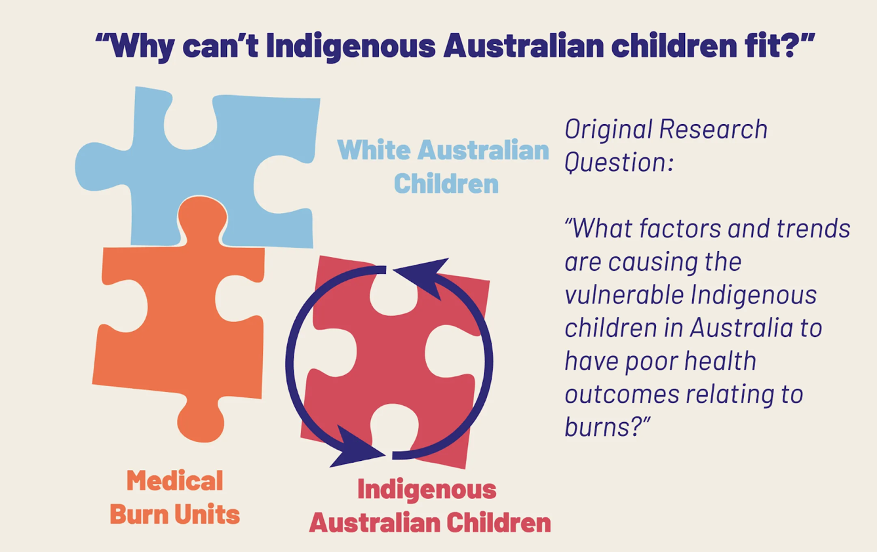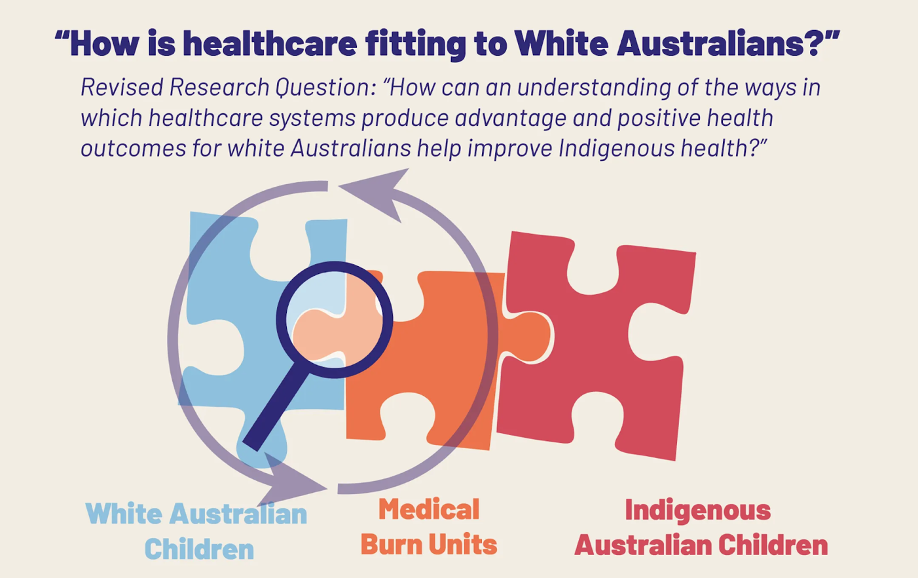Hi, I’m Heather Krause, PStat, and I’m writing from the traditional land of the Huron-Wendat, the Seneca, and most recently, the Mississaugas of the Credit River. After many decades of conducting quantitative research for mission-driven organizations, I realized that most of the work I was doing was unintentionally racist, sexist, colonial, homophobic, and much more. Today I’m working on building a Data Equity Framework with the We All Count community that offers evaluators robust tools and methods for embedding equity in data projects.
One tool I’ve found that can make a dramatic difference quite quickly is to simply interrogate my research question for power dynamics. Exploring my research questions to identify who we’re actually expecting to change has opened my eyes to a lot of implicit bias. I could share many past mistakes and they’re learning. But I’ll just pick one to share today.
Recently, we were involved in a project trying to understand the poor outcomes of Indigenous children. We started out with the research question: “What factors and trends are causing the vulnerable Indigenous children in Australia to have poor health outcomes relating to burns?” Is this an equitable research question or world view? The expectation that indigenous populations change to adjust to ‘the system’ rather than the other way around reflects a common colonial worldview and reinforces an underlying assumption that non-indigenous people ‘figured out’ how to use a system rather than the reality in which that system was constructed specifically to work for them.

Lesson Learned: Acknowledging this allowed the question to be reframed to examine how the healthcare system better supported white children with burns and how that effectiveness could be extended and altered to serve a more inclusive group. In this case, the research question was changed to be “How can an understanding of the ways in which healthcare systems produce advantage and positive health outcomes for white Australians help improve Indigenous healthcare.”

Hot Tip: I like to think of the different variables involved in a project as puzzle pieces that can fit together well, poorly, or not at all. When we design research questions we try to decide which piece to rotate, shift or swap out to see improvement or ‘positive change’. Choosing which piece to study is easy when you ask, ‘What’s the most equitable piece to adjust?’.
The American Evaluation Association is celebrating Feminist Issues in Evaluation (FIE) TIG Week with our colleagues in the FIE Topical Interest Group. The contributions all this week to aea365 come from our FIE TIG members. Do you have questions, concerns, kudos, or content to extend this aea365 contribution? Please add them in the comments section for this post on the aea365 webpage so that we may enrich our community of practice. Would you like to submit an aea365 Tip? Please send a note of interest to aea365@eval.org. aea365 is sponsored by the American Evaluation Association and provides a Tip-a-Day by and for evaluators.

Very interesting piece, and I love the concept of the puzzle pieces! Thanks for sharing. One question I am wrestling with in your example is, wouldn’t some of the factors the affect indigenous children’s outcomes get missed by focusing on the healthcare system, since there may be factors outside the healthcare system that could differentially affect outcomes? I’m also interested to understand more about how you bridge the gap from understanding how systems work for white children to seeing how they can be improved for indigenous children, since I would assume that some of what works best for white kids might not necessarily be what works best for indigenous kids. I would really appreciate any further elaboration you could provide, to help me think through how to make this work in practice!